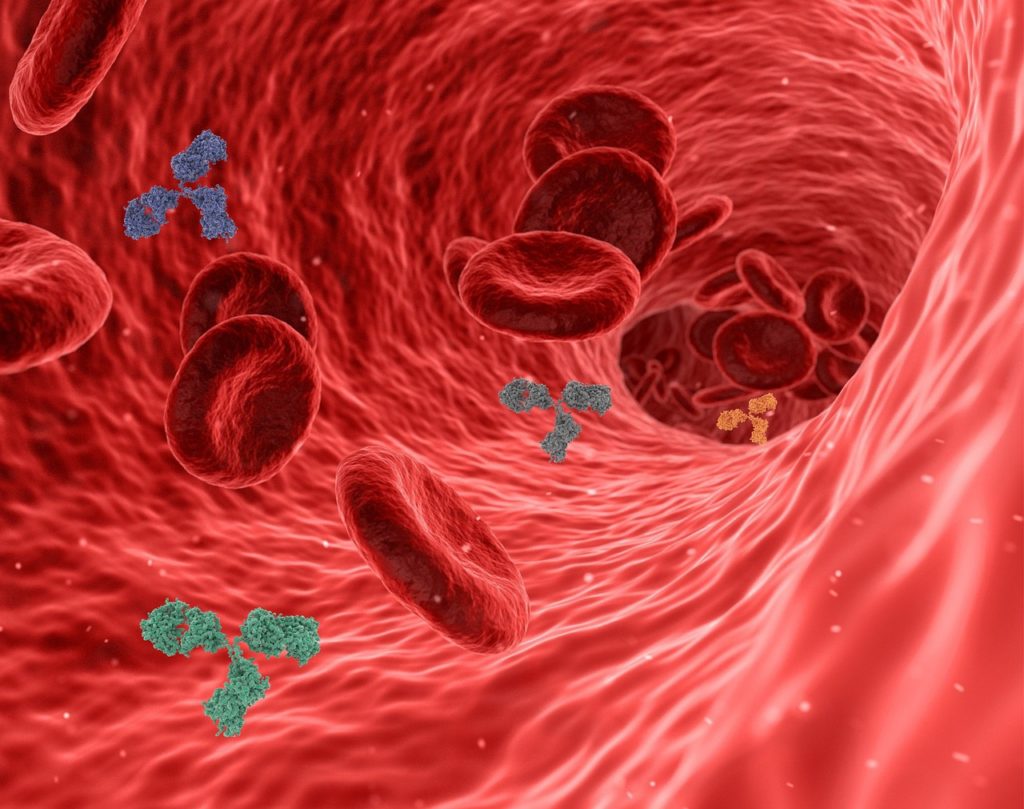
In this video, I will talk about my neurologist’s attitude towards me and my improved health since starting the carnivore diet.

Development of chronic musculoskeletal pain can be influenced by socioeconomics, fear of movement, smoking and poorer support networks, new research shows.
In a systematic review of current evidence, researchers found that people from a lower socioeconomic background were twice as likely to develop chronic pain following injury.
Those with a combination of characteristics, including smoking, high level of pain at the time of injury, fear of movement, poorer support networks and a lower level of education or household income, maybe seven times more likely to develop chronic pain after an injury. The results are published in PLOS One.
Pain is described as ‘acute’ when it has been present for a short period of time – anything that lasts for less than three months after initial injury. Pain is described as chronic when it has been present for longer than three months after initial injury. Chronic musculoskeletal pain affects about 43 per cent of the UK population and is the greatest cause of disability worldwide, often persisting for many years or indefinitely. People with chronic pain often experience poorer quality of life and are also more likely to develop diseases including cancer, cardiovascular diseases and diabetes.
Current approaches to managing chronic pain focus on physical rehabilitation at the site of the pain, or injury. However, the body’s healing process usually takes place over no longer than three months, suggesting that the reasons for longer-term pain are more complex.
Lead author Michael Dunn, of the University of Birmingham and St. George’s University Hospitals NHS Foundation Trust, said: “The purpose of acute pain is to alter behaviour to protect the body from harm, but chronic pain persists because of a sensitised nervous system that continues our experience of pain, even after the healing process has completed.”
This process, the researchers found, is influenced by a range of psychological and social factors and so treatment which focuses solely on the injured body part is often ineffective.
Mr Dunn continued: “The characteristics that we have identified are related particularly to an individual’s experiences, rather than a type of injury. For that reason, approaches to treating people with musculoskeletal injuries should be more person-centred, focusing on broader biological, psychosocial and social well-being. Put simply, current healthcare approaches do not address all the reasons people do not get better.”
The researchers also identified other factors related to developing chronic pain, such as lower job satisfaction, stress and depression. These characteristics were supported by lower quality evidence, but are also linked to lower socioeconomic backgrounds.
“People from lower socioeconomic backgrounds are twice as likely to develop chronic pain after injury. This indicates that not only are current healthcare approaches inadequate, they may also be discriminatory, with current healthcare approaches that are orientated around the injured body part being geared towards those from higher socioeconomic backgrounds who are less likely to experience these psychological or social factors,” said Mr Dunn.

According to The National Institute on Deafness and Other Communication Disorders (NIDCD), Autism can affect children’s language development and communication in a variety of ways. While some children with autism may encounter difficulties communicating verbally, others exhibit impressive vocabularies and the ability to speak on specific topic areas in detail. A new study led by Boston University neuroscientist Dr. Andrey Vyshedskiy examines these unique pathways of language development in autistic children. Published in npj Mental Health Research, this research, encompassing data from over 31,000 autistic individuals, is the most extensive on language comprehension acquisition in autism. Dr. Vyshedskiy’s study supports an idea he had more than two decades ago: that language learning for autistic individuals doesn’t happen in a straight line but goes through three different stages. In this Q&A, he discusses the research’s key takeaways and implications for clinicians, educators, and caregivers.
The common intuitive belief is that language comprehension development follows a linear trajectory: children acquire one grammatical rule at a time. Based on a neurological approach, I predicted over 20 years ago that language unfolds in three steps instead of linear development corresponding to three language comprehension mechanisms of increasing complexity. The new study of over 31,000 autistic individuals, published in npj Mental Health Research, validates this prediction. The implications of this discovery are important for philosophy, paleoanthropology, linguistics, clinical medicine, and improving language therapy interventions for children with autism.
The current practice of characterizing children’s communication ability only regarding their speech (i.e., verbal, nonverbal, or minimally verbal) is insufficient and one-sided. The new results show that communication abilities can vary independent of verbal abilities. For example, nonverbal children with full syntactic language comprehension have a normal ability to communicate, albeit nonverbally, while verbal children lacking syntactic language comprehension do not have a normal ability to communicate by any means. The new study demonstrates that the three identified language comprehension mechanisms are neurologically and clinically distinct from speech ability. A combined two-dimensional language characterization in terms of both language comprehension and verbal level will better identify children’s communication ability and lead to more children reaching their full linguistic potential.
This is the largest study of language comprehension acquisition in autistic children. It included over 31,000 individuals and was conducted by surveying parents via a language therapy app popular among families with children diagnosed with autism and other language deficits.
Language comprehension in children is commonly assessed based on vocabulary. This evaluation method can grossly misrepresent the child’s actual language comprehension progress. Moreover, it encourages therapists to focus on vocabulary training at the expense of exercises that build full language comprehension. The new study provides evidence for creating new assessments evaluating the three mechanisms of language comprehension. These assessments are poised to improve language therapy interventions and enhance outcomes for individuals with language deficits.
Focus all your efforts on improving your child’s language comprehension. Connecting words is more important than building vocabulary. Language comprehension exercises are included in the book I wrote for parents, This Way to Language: Four Things to Do at the First Sign of Autism.
Our recent research demonstrates that the critical period for language acquisition is significantly shorter in autistic children compared to typical children. The shortened critical period may be the main culprit preventing autistic children from acquiring full language. These findings suggest that intensive language therapy has to start much earlier in children with suspected language deficits and encourage research into the possibility of pharmacological extension of the critical period for language acquisition.

Autoantibodies are antibodies that are supposed to fight off invaders but end up turning against one’s own body, causing problems like autoimmune diseases. Utilizing the U.S. Department of Defense Serum Repository, a cohort encompassing more than 10 million individuals, researchers conducted whole-proteome autoantibody profiling on hundreds of MS patients’ samples collected before and after symptom onset. They discovered a distinct cluster of patients exhibiting an autoantibody signature targeting a common recognizable pattern. Notably, these patients showed antibody reactivity years before developing any MS symptoms and had elevated levels of serum neurofilament light (sNfL), indicating early neuroaxonal injury.
Danillo Augusto, Ph.D., an assistant professor in biology at the University of North Carolina at Charlotte and a co-author of the study, stated, “This study sheds light on the preclinical phase of MS and provides a promising avenue for early detection and intervention. Identifying patients at high risk of developing MS before symptom onset could revolutionize patient care and treatment strategies.”
Further validation of this autoantibody signature was conducted on samples from a separate MS cohort, confirming its high specificity for patients diagnosed with MS. This finding marks a significant milestone in MS research, potentially paving the way for the development of antigen-specific biomarkers for high-risk individuals with clinically or radiologically isolated neuroinflammatory syndromes.
About one-third of people with diabetes develop foot ulcers during their lifetime. In the U.S., more than 160,000 lower extremity amputations are performed annually due to complications from diabetic foot ulcers, costing the American health system about $30 billion a year. Those who have foot ulcers often die at younger ages than those without ulcers. CREDIT Courtesy UT Arlington
Researchers have developed a new shoe insole technology that helps reduce the risk of diabetic foot ulcers, a dangerous open sore that can lead to hospitalization and leg, foot or toe amputations.
“The goal of this innovative insole technology is to mitigate the risk of diabetic foot ulcers by addressing one of their most significant causes: skin and soft tissue breakdown due to repetitive stress on the foot during walking,” said Muthu B.J. Wijesundara, principal research scientist at The University of Texas at Arlington Research Institute (UTARI).
Affecting about 39 million people in the U.S., diabetes can damage the small blood vessels that supply blood to the nerves, leading to poor circulation and foot sores, also called ulcers. About one-third of people with diabetes develop foot ulcers during their lifetime. In the U.S., more than 160,000 lower extremity amputations are performed annually due to complications from diabetic foot ulcers, costing the American health system about $30 billion a year. Those who have foot ulcers often die at younger ages than those without ulcers.
“Although many shoe insoles have been created over the years to try to alleviate the problem of foot ulcers, studies have shown that their success in preventing them is marginal,” Wijesundara said. “We took the research a step further by creating a pressure-alternating shoe insole that works by cyclically relieving pressure from different areas of the foot, thereby providing rest periods to the soft tissues and improving blood flow. This approach aims to maintain the health of the skin and tissues, thereby reducing the risk of diabetic foot ulcers.”
In an article in the peer-reviewed International Journal of Lower Extremity Wounds, Wijesundara and UTA colleagues Veysel Erel, Aida Nasirian and Yixin Gu, along with Larry Lavery of UT Southwestern Medical Center, described their innovative insole technology. After this successful pilot project, the next step for the research team will be refining the technology to make it more accessible for users with varying weights and shoe sizes.
“Considering the impact of foot ulcers, it’s exciting that we may be able to make a real difference in the lives of so many people,” Wijesundara said.